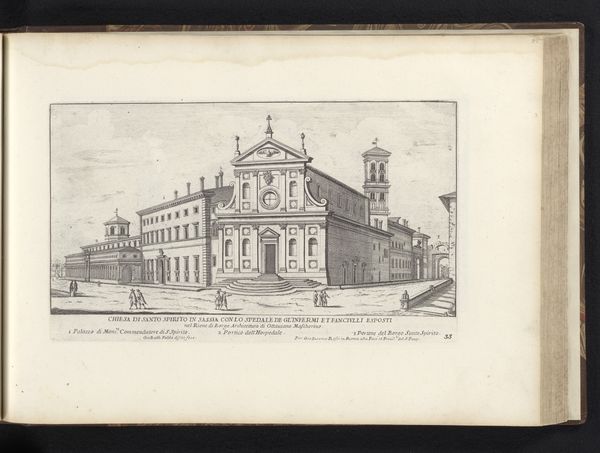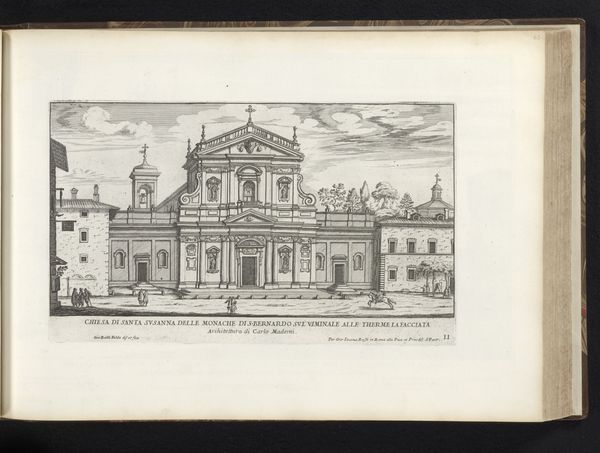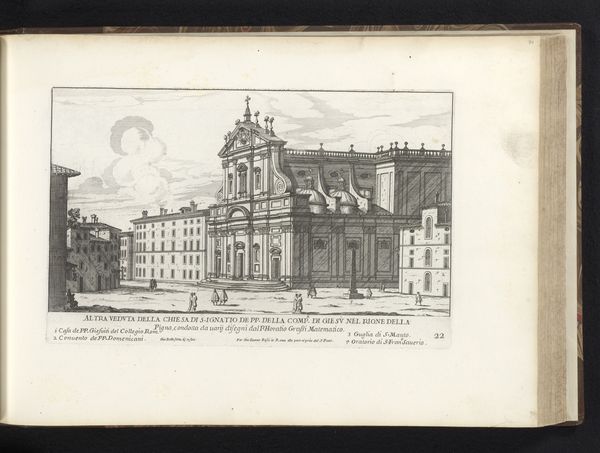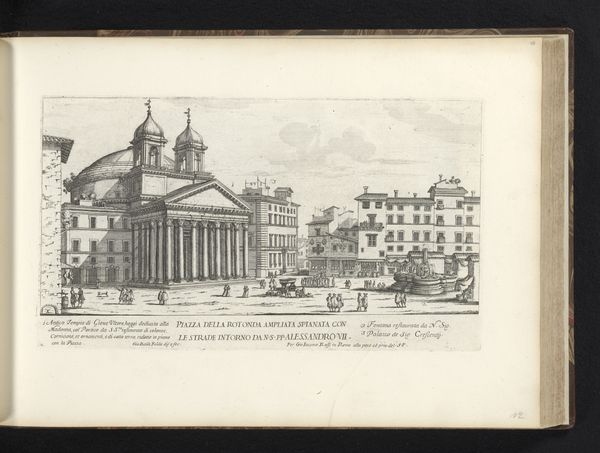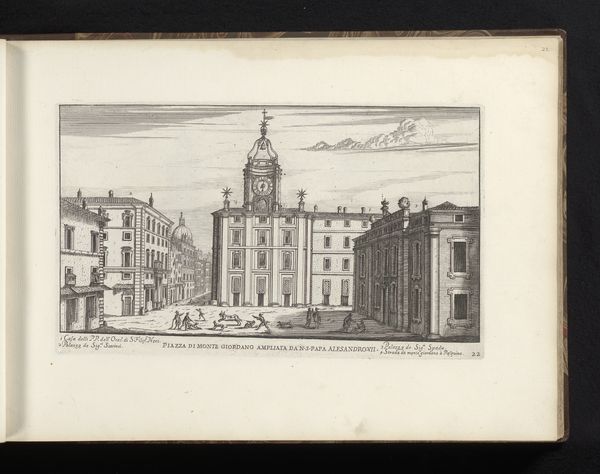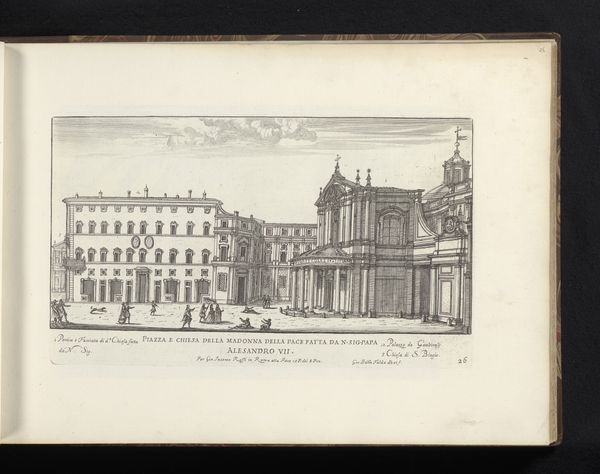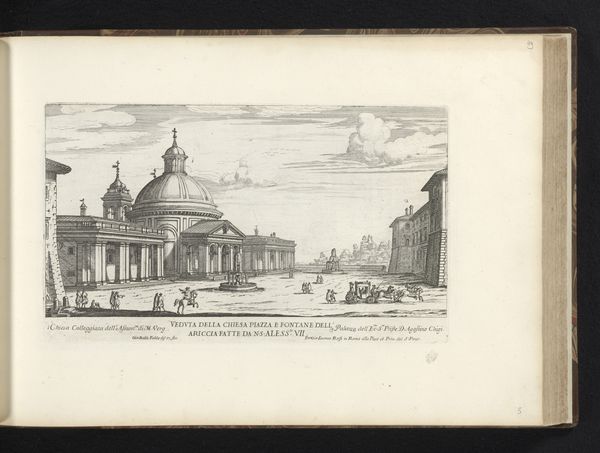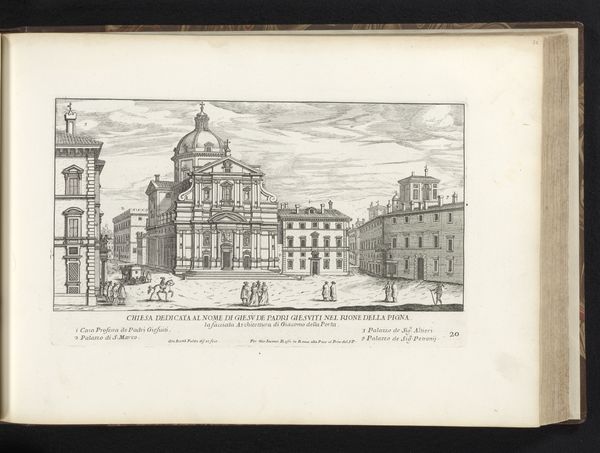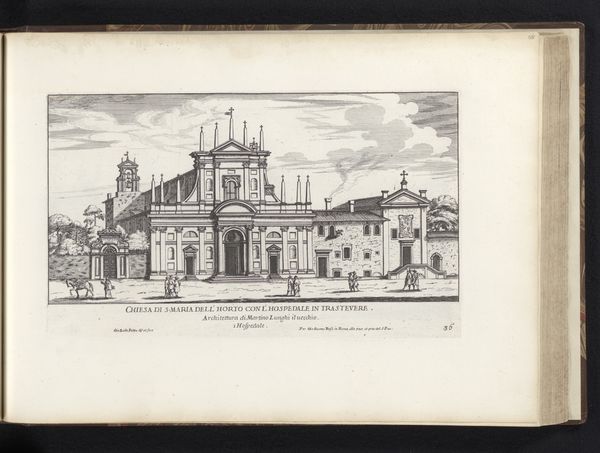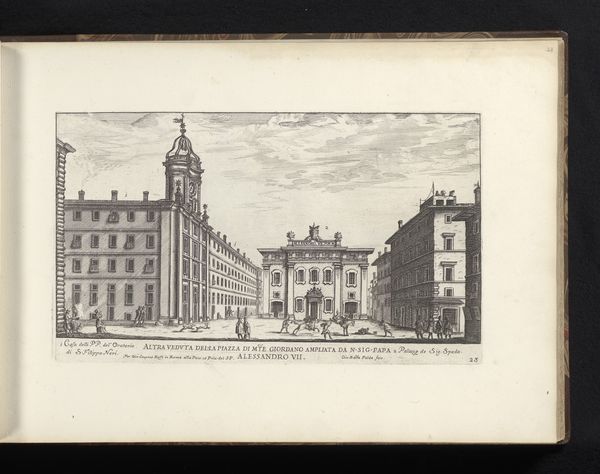
drawing, print, engraving, architecture
#
drawing
#
aged paper
#
toned paper
#
baroque
# print
#
old engraving style
#
sketch book
#
perspective
#
personal sketchbook
#
pen-ink sketch
#
pen and pencil
#
line
#
pen work
#
sketchbook drawing
#
cityscape
#
sketchbook art
#
engraving
#
architecture
Dimensions: height 170 mm, width 289 mm
Copyright: Rijks Museum: Open Domain
Curator: This engraving captures the Chiesa di Santa Maria in Transpontina, in Rome, dating back to 1669-1670, by Giovanni Battista Falda. The print is currently held in the Rijksmuseum collection. Editor: My first impression is the weight of history in its precise lines and muted tones. The architecture feels monumental, yet also oddly intimate, as if the city exhales a long, silent sigh. Curator: It’s fascinating how Falda rendered the architecture. Note the precision of the lines describing the baroque facade and bell tower, combined with that dramatic, almost theatrical perspective. Do you see anything symbolic here? Editor: Absolutely. Beyond the clear Christian iconography inherent in the church itself, the careful articulation of space speaks volumes. Look at how the building commands the composition; it’s a symbol of stability, perhaps of divine order imposed on the chaos of the world. But notice the figures on the piazza—they seem almost dwarfed by the building. Curator: I see what you mean, a constant negotiation between the worldly and spiritual domains. Given its location between the Vatican and Castel Sant'Angelo, there’s also this implicit suggestion of the church acting as a bridge. Editor: Bridges are a potent symbol, indeed. Consider how the architectural lines direct your eye – drawing you toward an unseen destination. Falda seems to emphasize movement and transition, embodying the soul's journey. Curator: An idea reinforced, perhaps, by the deliberate emptiness surrounding the central figure, highlighting spiritual introspection. It really asks one to consider one’s own place within the architectural majesty and the context of history. Editor: Indeed, and beyond historical documentation, the engraving hints at something greater. For me, this evokes an entire legacy held in aged paper. A conversation between the transient and timeless.
Comments
No comments
Be the first to comment and join the conversation on the ultimate creative platform.
